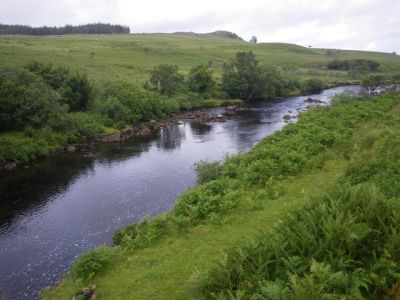 Riparian Mitigation
Riparian Mitigation
What is a Riparian Area?
Riparian areas, or zones, are the narrow strips of land that boarder bodies of water. The plant species and topography of riparian areas can vary drastically from the adjacent uplands due to it proximity to water. These areas are vital to the overall landscape even though they make up such a small percentage of the watershed. A healthy and functioning riparian area can dramatically increase benefits such as aquatic habitat, wildlife habitat, erosion control, forage, and water quality.
Riparian ecosystems are essential for providing productive and diverse habitat values for wildlife. The linear nature of these areas creates corridors and forested connectors between habitats that are important for wildlife migration and dispersal routes. These ecosystems provide essential shelter, nesting areas, foraging, and breeding areas for many types of wildlife, including threatened and endangered species.
Healthy Riparian Zones
Riparian zones can be natural or engineered for erosion control or restoration. These zones are natural biofilters, they protect aquatic environments from heavy sedimentation, polluted surface runoff and erosion. While they provide shelter and food for many aquatic animals, they also provide shade which is an important part of stream temperature regulation.
When riparian zones are damaged by construction, agriculture, or silviculture, restoration can take place through human intervention in erosion control and revegetation. When the area adjacent to a watercourse has standing water or saturated soil over a season, it is normally called a wetland because of the hydric soil characteristics. Riparian zones are often the subject of national protection in a Biodiversity Action Plan.
Riparian zones are instrumental in water quality improvement for surface runoff and the water that flows into stream through subsurface or groundwater flow. It is particularly important for the attenuation of nitrate or denitrification of the nitrates from fertilizer in the buffer zone. The riparian zone can also play a role in decreasing nitrate contamination from agricultural surface runoff, this runoff would otherwise damage ecosystems and human health. Wetland riparian zones have shown a high rate of nitrate removal from water entering a stream, this makes it an efficient tool in agricultural management.
Roles and Functions:
Riparian zones play a role in stream energy dissipation. The curves of the river, along with the vegetation and root systems, assist in dissipating stream energy. This results in flood damage reduction and reduced soil erosion. Sediment is trapped, water becomes less turbid due to the reduced suspended solids, soil is replenished, and stream banks build back up. Riparian zones increase filtration of pollutants and promote enhanced water quality (i.e. biofiltration).
Riparian zones provide wildlife habitat, increased biodiversity, and allow aquatic and riparian wildlife to avoid isolated communities through travel along river systems in the wildlife corridors. Riparian zones can also provide forage for wildlife and livestock.
The natural landscape irrigation provided by riparian zones can extend seasonal or perennial flows of water. Vegetation around the stream helps shade the water which eases water temperature changes, vegetation also contributes debris to the stream which helps maintain geomorphology. Nutrients from vegetation (e.g. plant litter and insects) are also used in the aquatic food webs.
Riparian zones also contribute to nearby property values by adding amenity and views, they also provide opportunities for recreation through footpaths and bikeways. Access for fishing, swimming and watercraft launching can also be made in riparian zones to further increase recreational activity.
More information on Riparian Zones can be found on the USDA NRCS website.
